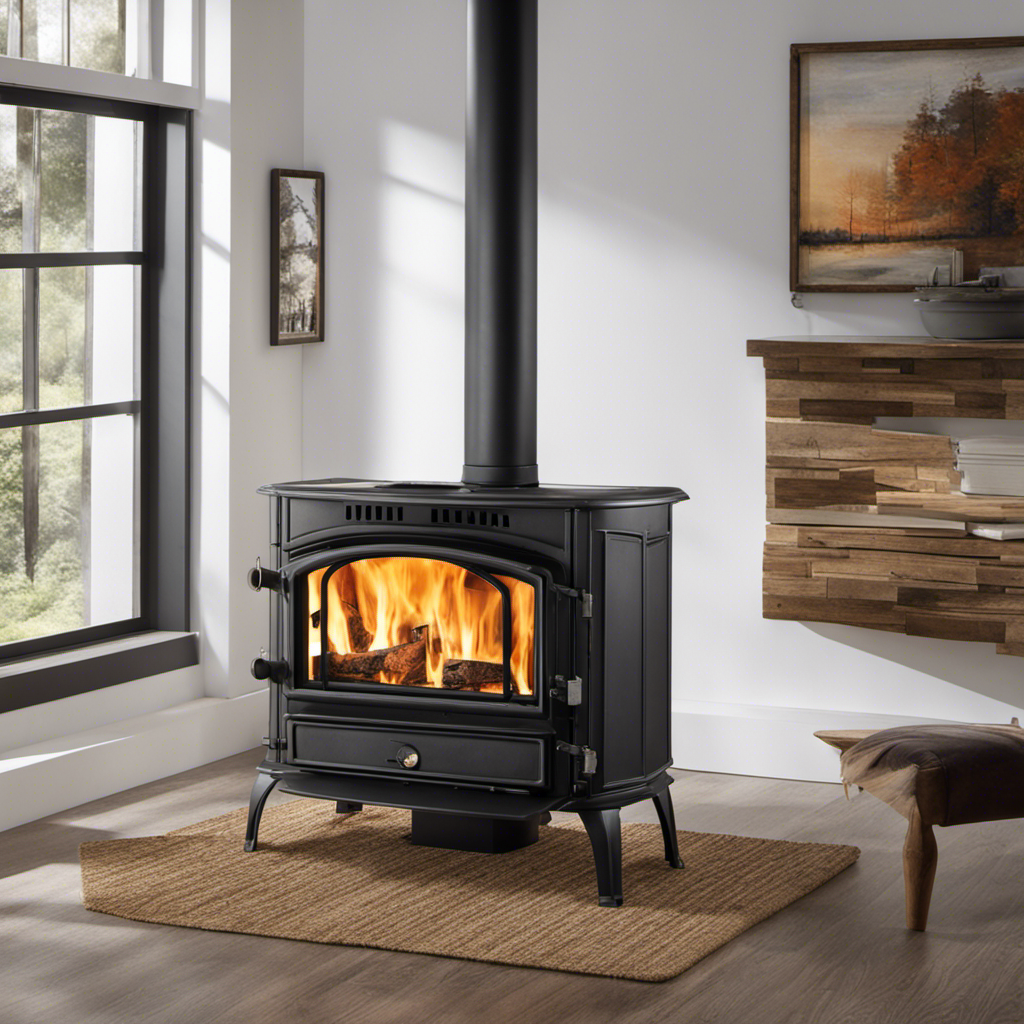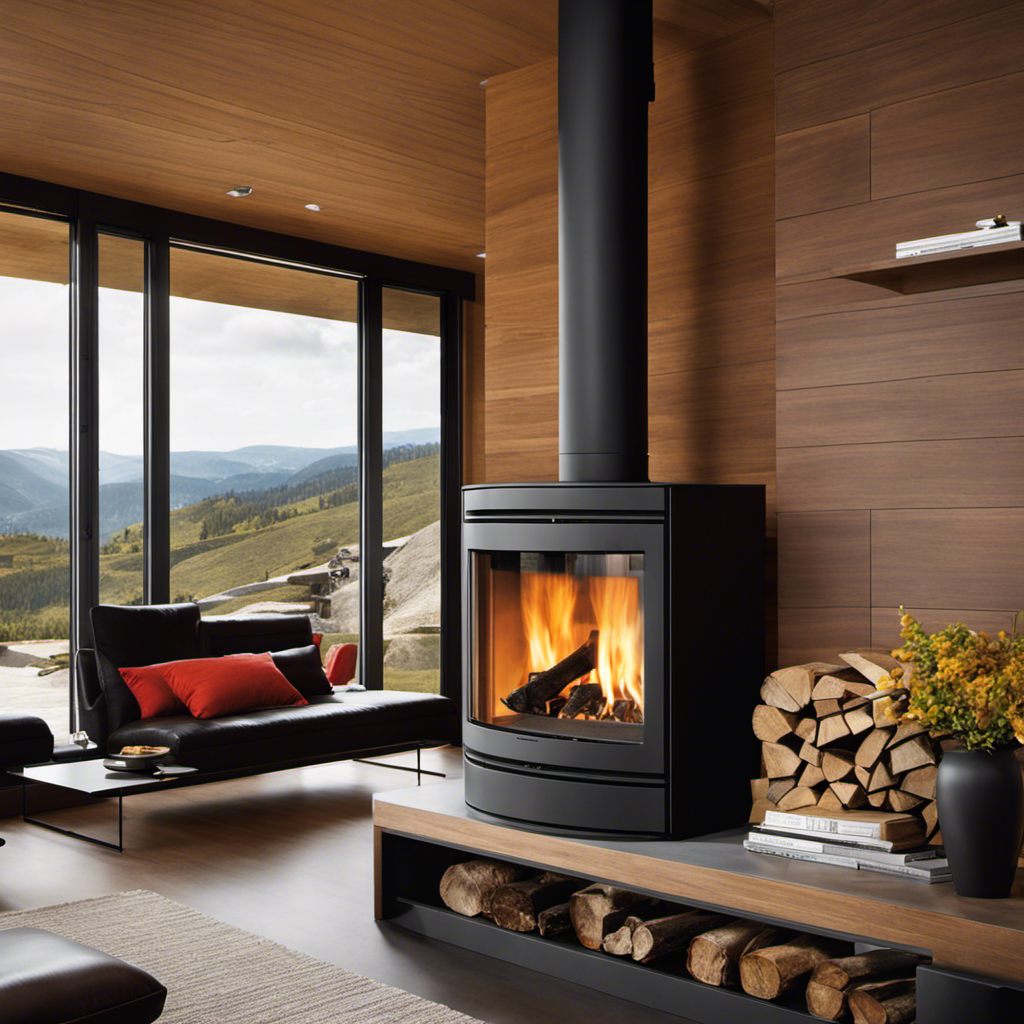
As a big fan of wood stoves, I am consistently impressed by the cozy and welcoming ambiance they create in a household.
But to ensure its efficiency and safety, choosing the right pipe is crucial.
In this article, we’ll explore the world of wood stove pipes, from single-wall to double-wall options, steel or stainless steel materials, and the importance of insulated chimney pipes.
So, sit back, relax, and let’s dive into the fascinating world of wood stove venting.
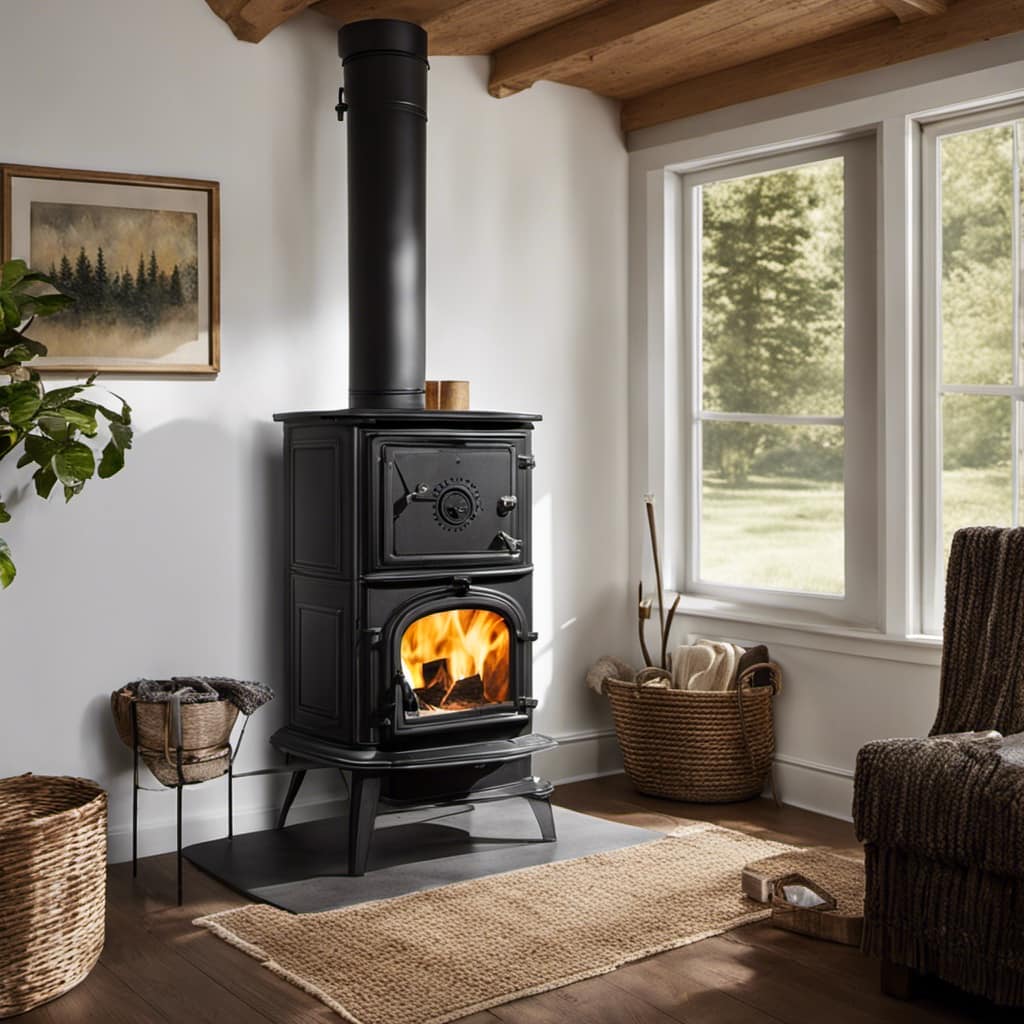
Key Takeaways
- Single-wall and double-wall pipes are two types of pipes commonly used for wood stoves.
- Steel pipes, stainless steel pipes, and black stove pipes are materials used for wood stove pipes.
- Insulated chimney pipes are important for safe and efficient wood stove operation, and they offer benefits such as improved draft and reduced creosote buildup.
- Choosing the right size pipe diameter is crucial for proper ventilation, and factors such as stove size and consulting with a professional should be considered when selecting the pipe diameter.
Single-Wall Vs. Double-Wall Pipes
I prefer using a double-wall pipe for my wood stove because of its superior insulation properties. When it comes to single wall vs. double wall pipes, there are pros and cons to consider.
Single-wall pipes are more affordable and easier to install. However, they don’t provide the same level of insulation as double-wall pipes. Double-wall pipes have an inner and outer layer with an air gap in between, which helps to keep the outer surface cooler and reduces the risk of heat transfer to combustible materials. This added insulation also increases the efficiency of the wood stove by ensuring that more heat is directed into the room rather than being lost through the chimney.
Now, let’s move on to the next section and discuss the materials: steel, stainless steel, or black stove pipe.
Materials: Steel, Stainless Steel, or Black Stove Pipe
There are three main options to consider when choosing a pipe for your wood stove: steel, stainless steel, or black stove pipe. Each material has its own advantages and considerations when it comes to stove pipe installation and maintenance. To help you make an informed decision, here is a table comparing the three options:
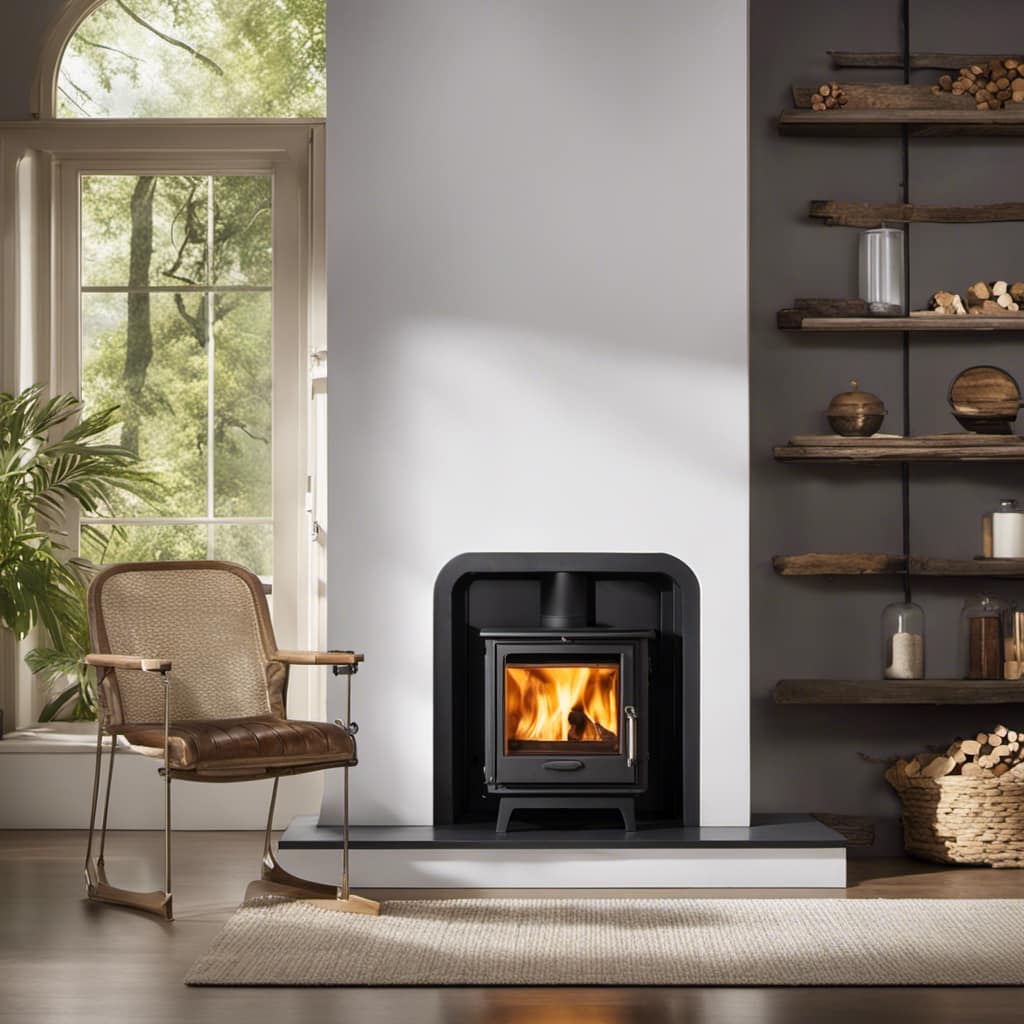
| Material | Advantages |
|---|---|
| Steel | Affordable and readily available |
| Stainless Steel | Resistant to corrosion and high temperatures |
| Black Stove Pipe | Aesthetically pleasing and traditional |
When it comes to stove pipe installation, it is important to follow the manufacturer’s instructions and local building codes. Regular maintenance is also crucial to ensure the safe and efficient operation of your wood stove. This includes regular cleaning to remove creosote buildup, inspecting for any damages or leaks, and replacing worn-out parts. Now, let’s discuss whether insulated chimney pipe is necessary for your wood stove setup.
Insulated Chimney Pipe: Is It Necessary
Although insulated chimney pipe may seem like an extra expense, it can greatly improve the efficiency and safety of your wood stove setup.
Insulated chimney pipe is specifically designed to handle the high temperatures produced by wood stoves, ensuring that the heat is efficiently transferred to your living space. The insulation layer helps to keep the flue gases hot, preventing condensation and creosote buildup, which can lead to chimney fires.
Additionally, insulated chimney pipe provides a safer option by reducing the risk of nearby combustible materials catching fire. It also helps to minimize heat loss by keeping the flue gases hotter, allowing your wood stove to operate at its optimal efficiency.
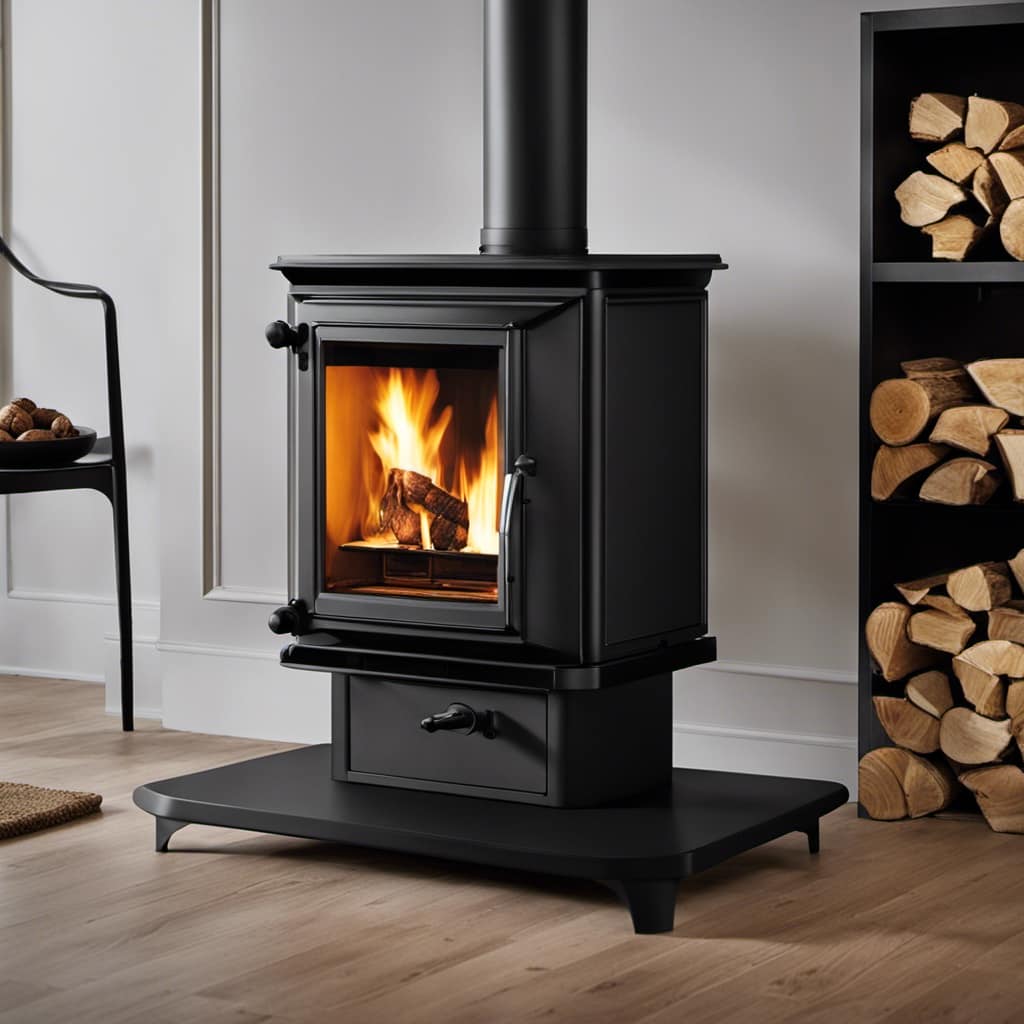
Regular stove pipe, on the other hand, isn’t designed to handle the high temperatures generated by wood stoves and can pose serious safety risks. Therefore, it’s highly recommended to use insulated chimney pipe for your wood stove installation.
Pipe Diameter: Choosing the Right Size for Your Wood Stove
Choosing the right size pipe diameter for your wood stove is crucial to ensure proper airflow and efficient heating. When it comes to the diameter of your wood stove pipe, it’s important to consider factors such as the size of your stove, the length of the pipe, and the overall design of your heating system.
To help you make an informed decision, here is a table that outlines the recommended pipe diameter based on stove size:
| Stove Size (BTU) | Pipe Diameter (inches) |
|---|---|
| 0-20,000 | 4 |
| 20,000-40,000 | 5 |
| 40,000-60,000 | 6 |
Keep in mind that this is just a general guideline, and it’s always best to consult with a professional for pipe sizing specific to your wood stove. Additionally, proper installation and pipe insulation are key factors in ensuring the efficient operation of your wood stove. Proper insulation helps to minimize heat loss and maximize the heat transfer to your living space, while proper installation ensures that the pipe is securely connected and sealed to prevent any air leaks.

Venting Options: Through the Wall or Through the Ceiling?
I prefer venting through the wall because it allows for easier installation and maintenance. When it comes to venting options for your wood stove, you have two main choices: through the floor or through the roof.
Here are the advantages and disadvantages of each:
- Venting through the floor:
- Advantages:
- Provides a direct path for the smoke to escape.
- Can be more aesthetically pleasing as the vent pipe is hidden beneath the floor.
- Disadvantages:
- Requires cutting a hole in the floor, which may require professional help.
- Difficult to access for maintenance or repairs.
- Venting through the roof:
- Advantages:
- Smoke rises naturally, making this option more efficient.
- Allows for easier access to the vent pipe for cleaning and maintenance.
- Disadvantages:
- Requires cutting a hole in the roof, which may cause potential leaks if not properly installed.
- Visible vent pipe on the roof can affect the overall appearance of your home.
Considering the advantages and disadvantages, venting through the wall seems like the more practical choice for most homeowners. It offers easy installation and maintenance, without compromising the aesthetics of your home.
Frequently Asked Questions
Can I Use a Single-Wall Pipe for My Wood Stove if I Already Have a Double-Wall Pipe Installed?
Yes, you can use a single-wall pipe for your wood stove even if you already have a double-wall pipe installed. The advantage of a single-wall pipe is that it is easier to install and can be used for wood stoves without a chimney.
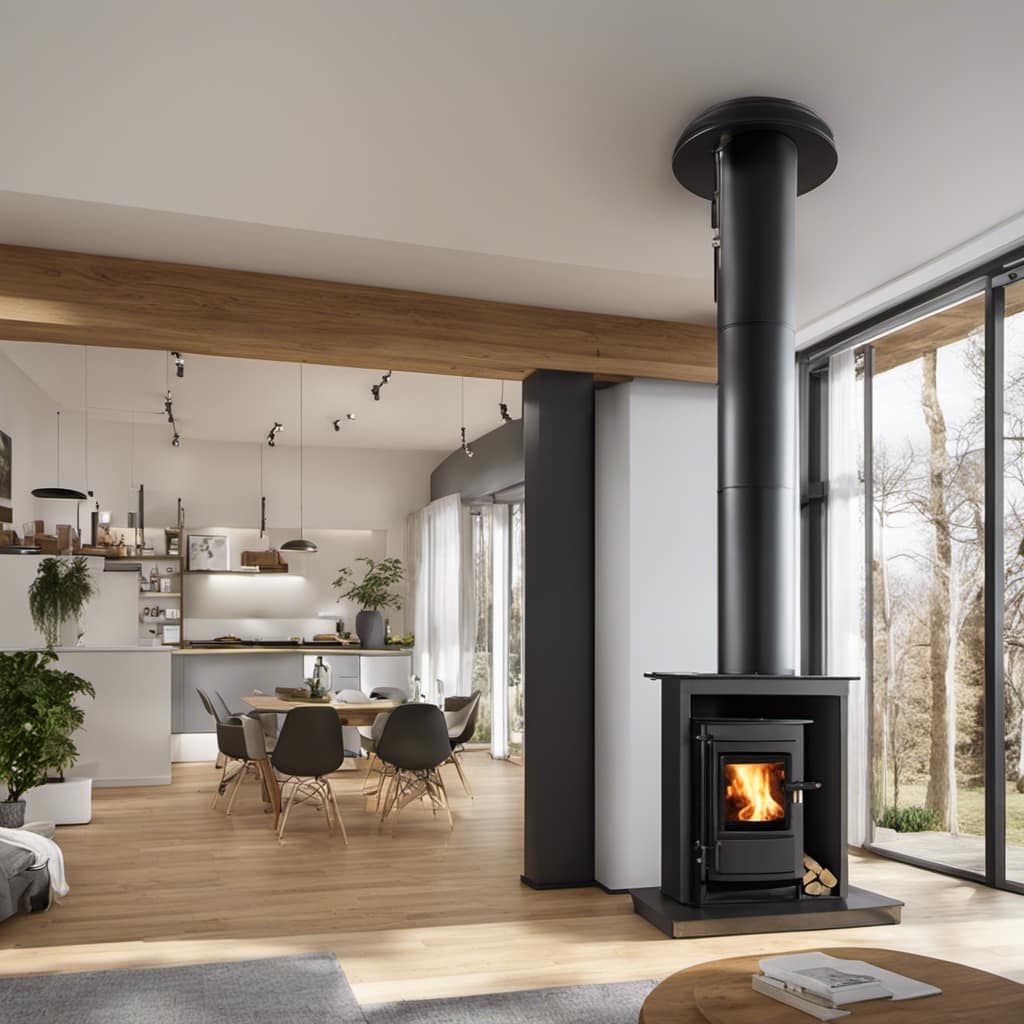
Are There Any Advantages to Using Stainless Steel Pipe Over Steel or Black Stove Pipe?
There are several advantages to using stainless steel pipe for a wood stove. It is more durable, resistant to corrosion, and has better heat retention. It is one of the most suitable materials for wood stove pipes.
Is Insulated Chimney Pipe Necessary for All Wood Stove Installations, or Are There Certain Circumstances Where It Is Not Needed?
Insulated chimney pipe is not necessary for all wood stove installations. There are certain circumstances where it is not needed, such as when the stove is close to a non-combustible wall or when the chimney runs through a heated space.
How Do I Determine the Correct Diameter of Pipe to Use for My Wood Stove?
To determine the correct diameter of pipe for my wood stove, I need to calculate the optimal ventilation size. This involves considering factors like the stove’s BTU output, the length of the pipe run, and any elbows or bends in the system.
Are There Any Specific Safety Considerations or Regulations to Keep in Mind When Venting a Wood Stove Through the Wall or Ceiling?
When it comes to venting a wood stove through the wall or ceiling, there are important safety regulations to keep in mind. It’s crucial to follow these guidelines to ensure proper ventilation and prevent any potential hazards. Additionally, there are various venting options available depending on your specific setup.
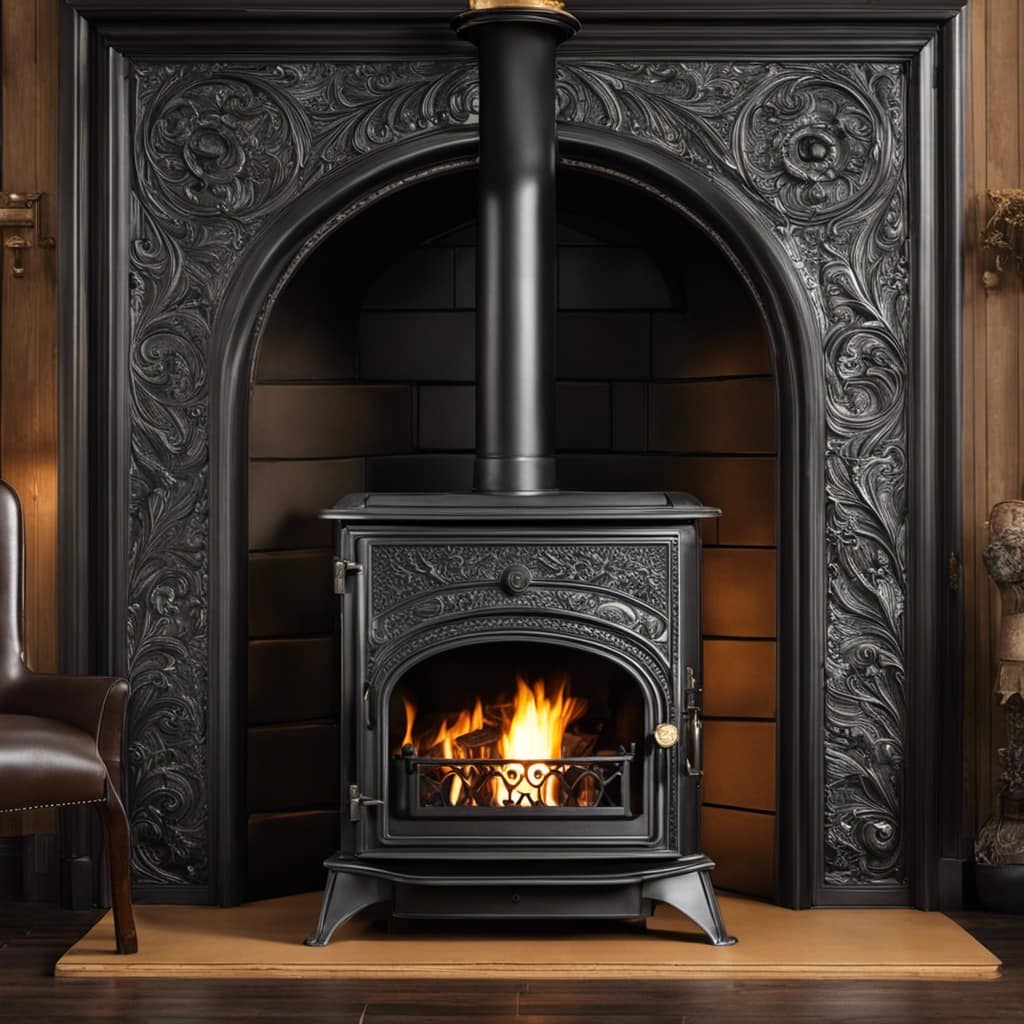
Conclusion
In conclusion, when it comes to choosing the right pipe for your wood stove, it’s important to consider factors such as single-wall vs. double-wall pipes, materials like steel or stainless steel, and the necessity of insulated chimney pipe.
Additionally, selecting the appropriate pipe diameter and deciding on venting options through the wall or ceiling are crucial.
By making informed choices, you can ensure a safe and efficient wood stove experience that keeps you warm and cozy.
Growing up surrounded by the vast beauty of nature, Sierra was always drawn to the call of the wild. While others sought the comfort of the familiar, she ventured out, embracing the unpredictable and finding stories in the heartbeat of nature.
At the epicenter of every remarkable venture lies a dynamic team—a fusion of diverse talents, visions, and passions. The essence of Best Small Wood Stoves is crafted and refined by such a trio: Sierra, Logan, and Terra. Their collective expertise has transformed the platform into a leading authority on small wood stoves, radiating warmth and knowledge in equal measure.



